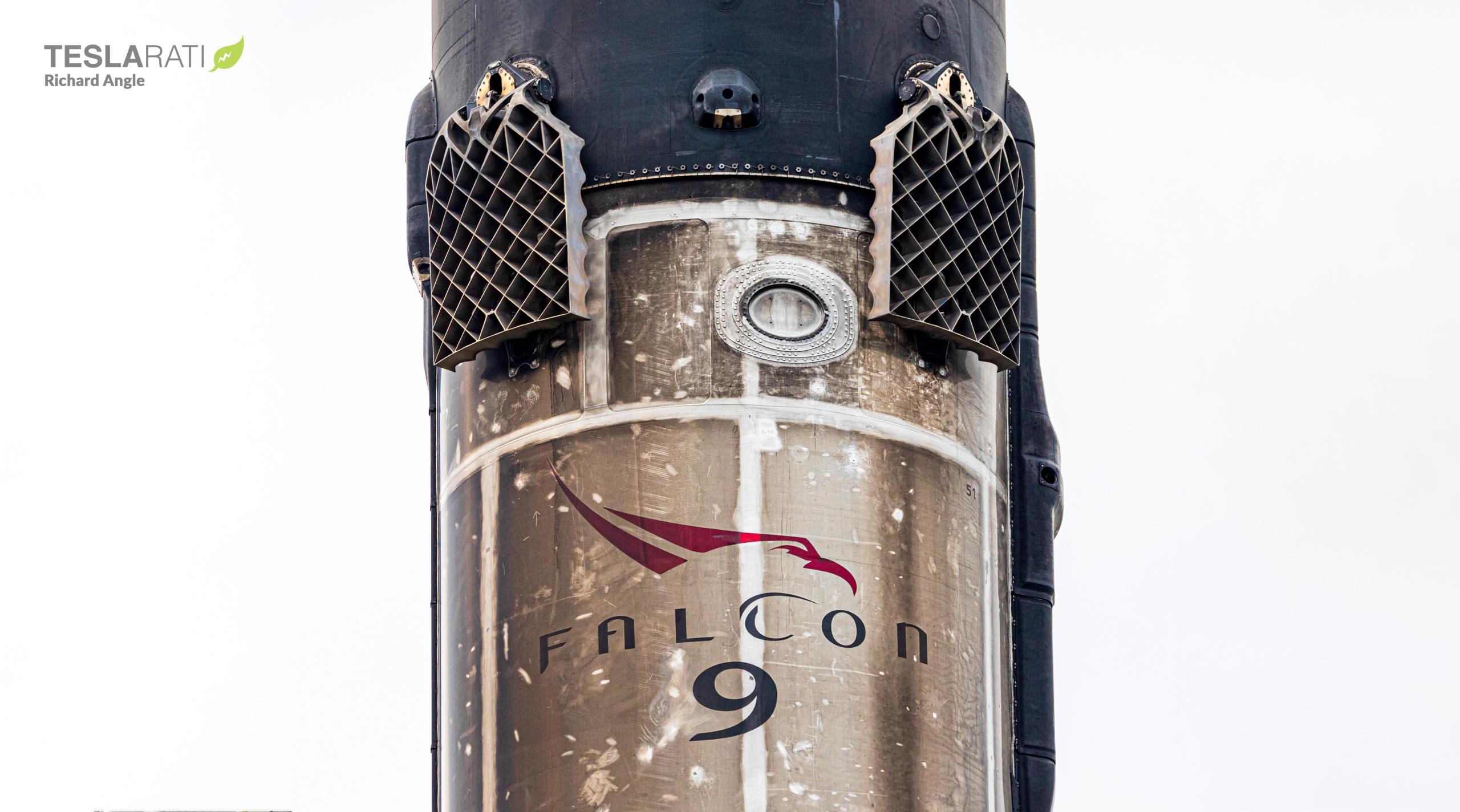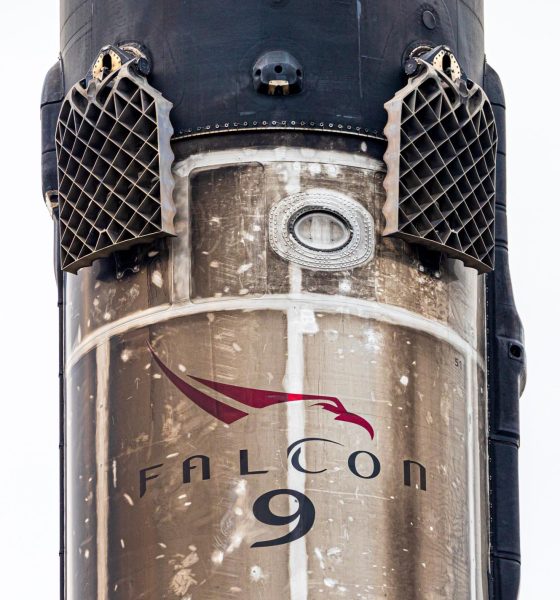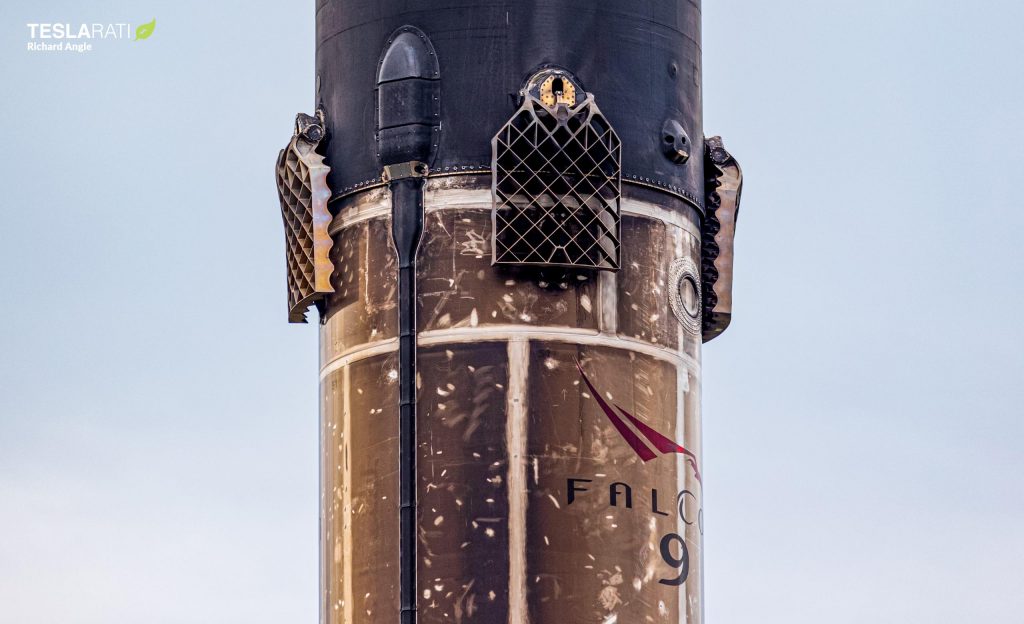

News
SpaceX sets new goals for Falcon booster reuse goals after ten-flight milestone
Speaking virtually at Barcelona’s 2021 Mobile World Congress (MWC), CEO Elon Musk says that SpaceX has already set its sights on even more ambitious reusability goals for Falcon rocket boosters.
Less than two months prior, booster B1051 sent 60 satellites and an upper stage on their way to orbit, simultaneously becoming the first Falcon 9 first stage to ace ten orbital-class launches and landings, crossing a mostly symbolic – but still significant – milestone years in the making. SpaceX competitors – most notably the United Launch Alliance – have often held the ten-flight mark over its head as the latest in a long line of moving goalposts used to discredit, demean, and look down upon reusable rockets and SpaceX’s efforts to realize them.
Not long before it was clear that SpaceX would hit that 10-flight target with at least one Falcon booster, competitors working overtime to rationalize a lack of substantial investment into reusable rockets shifted their goalposts again, expanding rationales to require a fleetwide average of ten flights. Instead of explaining why SpaceX’s reusability plans could never work, as many dozens of aerospace executives have assuredly done over the last 5-10 years, the new attitude du jour is to claim that SpaceX’s ability to achieve its reuse goals was never actually in doubt and that the economics of full booster reuse simply can’t make economic sense!
Now, five and half years after Falcon 9’s first successful booster landing, four years after SpaceX’s first successful booster reuse, and seven weeks after a Falcon 9 first stage’s first ten-flight milestone, Elon Musk says that some of the company’s fleet of boosters are already “slated to fly 20 or possibly 30 times.” Never one to personally rest or allow his companies to rest on their laurels, SpaceX now has a new target to strive for as teams work to ramp and sustain Falcon 9’s launch cadence at record-breaking levels.
Back before Falcon 9’s Block 5 upgrade debuted in May 2018, Musk held a press conference in which he made it abundantly clear that it was SpaceX’s “unequivocal intent” to launch new Falcon boosters up to 10 times without refurbishment. Three years later, although SpaceX ultimately abandoned plans to recover and reuse Falcon 9’s upper stage to prioritize Starship development, Musk’s dream of cutting the cost of launch by a full magnitude has almost been realized.
Technically, if SpaceX had developed a reusable upper stage, Falcon 9 as it stands today could feasibly cost just ~10% of its list price (~$6 million. Factoring in the cost of a new expendable upper stage for each mission, the actual cost of a modern Falcon 9 launch with a flight-proven booster and payload fairing is closer to ~$18M. However, in the same June 2021 interview, Musk confirmed that the cost of Falcon 9 operations – as in refurbishment, recovery, consumables, and any other recurring work – is just 10% of the cost of launch, effectively confirming that Falcon 9’s Block 5 upgrade really did create a rocket booster that requires virtually no refurbishment.

Back in Musk’s 2018 conference call, he also noted that beyond plans for up to ten flights without refurbishment, Falcon boosters could feasibly be made to fly dozens or even 100+ times with occasional in-depth maintenance – not unlike modern aircraft. Three years later, Musk is now talking about launching certain Falcon boosters 20 or 30 times, while something approximating the recurring maintenance he once described has yet to crop up.
It’s possible, in other words, that SpaceX has found that Falcon 9 Block 5 boosters – which do need some small amount of refurbishment and inspection after each launch – can actually be flown 20 or 30 times without major rework. Ultimately, only time will tell, but Falcon 9 B1051’s 11th flight is expected – this time from the West Coast – as early as late July or August 2021, carrying SpaceX’s first or second dedicated batch of polar Starlink satellites. B1051 arrived at Vandenberg Air/Space Force Base (VAFB) in late June about a month after Falcon 9 B1049 – likely set to become the second booster to complete ten launches.

News
Tesla FSD fleet is nearing 7 billion total miles, including 2.5 billion city miles
As can be seen on Tesla’s official FSD webpage, vehicles equipped with the system have now navigated over 6.99 billion miles.

Tesla’s Full Self-Driving (Supervised) fleet is closing in on almost 7 billion total miles driven, as per data posted by the company on its official FSD webpage.
These figures hint at the massive scale of data fueling Tesla’s rapid FSD improvements, which have been quite notable as of late.
FSD mileage milestones
As can be seen on Tesla’s official FSD webpage, vehicles equipped with the system have now navigated over 6.99 billion miles. Tesla owner and avid FSD tester Whole Mars Catalog also shared a screenshot indicating that from the nearly 7 billion miles traveled by the FSD fleet, more than 2.5 billion miles were driven inside cities.
City miles are particularly valuable for complex urban scenarios like unprotected turns, pedestrian interactions, and traffic lights. This is also the difference-maker for FSD, as only complex solutions, such as Waymo’s self-driving taxis, operate similarly on inner-city streets. And even then, incidents such as the San Francisco blackouts have proven challenging for sensor-rich vehicles like Waymos.
Tesla’s data edge
Tesla has a number of advantages in the autonomous vehicle sector, one of which is the size of its fleet and the number of vehicles training FSD on real-world roads. Tesla’s nearly 7 billion FSD miles then allow the company to roll out updates that make its vehicles behave like they are being driven by experienced drivers, even if they are operating on their own.
So notable are Tesla’s improvements to FSD that NVIDIA Director of Robotics Jim Fan, after experiencing FSD v14, noted that the system is the first AI that passes what he described as a “Physical Turing Test.”
“Despite knowing exactly how robot learning works, I still find it magical watching the steering wheel turn by itself. First it feels surreal, next it becomes routine. Then, like the smartphone, taking it away actively hurts. This is how humanity gets rewired and glued to god-like technologies,” Fan wrote in a post on X.
News
Tesla starts showing how FSD will change lives in Europe
Local officials tested the system on narrow country roads and were impressed by FSD’s smooth, human-like driving, with some calling the service a game-changer for everyday life in areas that are far from urban centers.

Tesla has launched Europe’s first public shuttle service using Full Self-Driving (Supervised) in the rural Eifelkreis Bitburg-Prüm region of Germany, demonstrating how the technology can restore independence and mobility for people who struggle with limited transport options.
Local officials tested the system on narrow country roads and were impressed by FSD’s smooth, human-like driving, with some calling the service a game-changer for everyday life in areas that are far from urban centers.
Officials see real impact on rural residents
Arzfeld Mayor Johannes Kuhl and District Administrator Andreas Kruppert personally tested the Tesla shuttle service. This allowed them to see just how well FSD navigated winding lanes and rural roads confidently. Kruppert said, “Autonomous driving sounds like science fiction to many, but we simply see here that it works totally well in rural regions too.” Kuhl, for his part, also noted that FSD “feels like a very experienced driver.”
The pilot complements the area’s “Citizen Bus” program, which provides on-demand rides for elderly residents who can no longer drive themselves. Tesla Europe shared a video of a demonstration of the service, highlighting how FSD gives people their freedom back, even in places where public transport is not as prevalent.
What the Ministry for Economic Affairs and Transport says
Rhineland-Palatinate’s Minister Daniela Schmitt supported the project, praising the collaboration that made this “first of its kind in Europe” possible. As per the ministry, the rural rollout for the service shows FSD’s potential beyond major cities, and it delivers tangible benefits like grocery runs, doctor visits, and social connections for isolated residents.
“Reliable and flexible mobility is especially vital in rural areas. With the launch of a shuttle service using self-driving vehicles (FSD supervised) by Tesla in the Eifelkreis Bitburg-Prüm, an innovative pilot project is now getting underway that complements local community bus services. It is the first project of its kind in Europe.
“The result is a real gain for rural mobility: greater accessibility, more flexibility and tangible benefits for everyday life. A strong signal for innovation, cooperation and future-oriented mobility beyond urban centers,” the ministry wrote in a LinkedIn post.
News
Tesla China quietly posts Robotaxi-related job listing
Tesla China is currently seeking a Low Voltage Electrical Engineer to work on circuit board design for the company’s autonomous vehicles.

Tesla has posted a new job listing in Shanghai explicitly tied to its Robotaxi program, fueling speculation that the company is preparing to launch its dedicated autonomous ride-hailing service in China.
As noted in the listing, Tesla China is currently seeking a Low Voltage Electrical Engineer to work on circuit board design for the company’s autonomous vehicles.
Robotaxi-specific role
The listing, which was shared on social media platform X by industry watcher @tslaming, suggested that Tesla China is looking to fill the role urgently. The job listing itself specifically mentions that the person hired for the role will be working on the Low Voltage Hardware team, which would design the circuit boards that would serve as the nervous system of the Robotaxi.
Key tasks for the role, as indicated in the job listing, include collaboration with PCB layout, firmware, mechanical, program management, and validation teams, among other responsibilities. The role is based in Shanghai.
China Robotaxi launch
China represents a massive potential market for robotaxis, with its dense urban centers and supportive policies in select cities. Tesla has limited permission to roll out FSD in the country, though despite this, its vehicles have been hailed as among the best in the market when it comes to autonomous features. So far, at least, it appears that China supports Tesla’s FSD and Robotaxi rollout.
This was hinted at in November, when Tesla brought the Cybercab to the 8th China International Import Expo (CIIE) in Shanghai, marking the first time that the autonomous two-seater was brought to the Asia-Pacific region. The vehicle, despite not having a release date in China, received a significant amount of interest among the event’s attendees.








